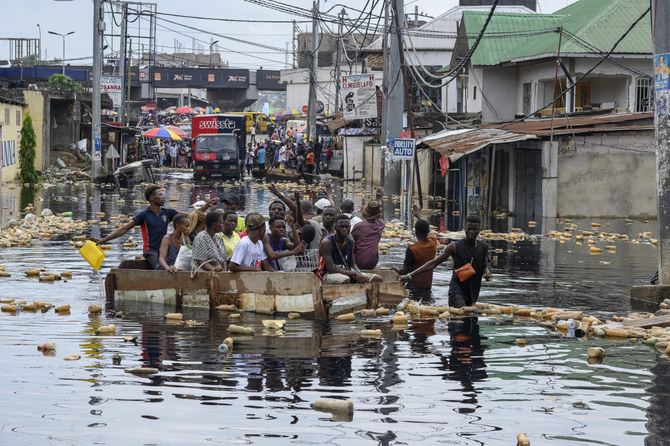Democratic Republic of Congo — May 12, 2025
At least 100 people have been confirmed dead and dozens more are feared missing after torrential rains triggered catastrophic flooding and landslides in the eastern part of the Democratic Republic of Congo (DRC). The natural disaster, which struck over the weekend, has ravaged several villages in South Kivu province, particularly in the Kalehe territory, where swollen rivers swept through entire communities.
Local authorities said that more bodies are being recovered as rescue teams reach previously inaccessible areas. Initial rescue operations were delayed due to collapsed bridges, impassable roads, and continued heavy rainfall. Officials warn that the death toll could rise significantly in the coming days as more villages report casualties and missing residents.
“This is a tragedy of immense proportions,” said Delphin Birimbi, a community leader in Bushushu, one of the worst-hit villages. “We are digging through mud with our bare hands to recover bodies. People are traumatized, hungry, and homeless.”
Eyewitnesses describe a night of terror as walls of water and debris surged through homes, destroying everything in their path. Many residents were caught off guard during the night, as floodwaters rose rapidly following more than 48 hours of continuous rainfall.
“I woke up to screams and water rushing into our house,” said Jeanine Mbusa, a resident of Nyamukubi village. “I grabbed my children and ran. When we looked back, our house was gone.”
Entire households have been wiped out. In some areas, the floodwaters triggered landslides that buried homes under tons of mud. Satellite images and drone footage show flattened villages, downed trees, and rivers that have changed course entirely.
In Kalehe, officials report that more than 1,200 homes have been destroyed, and an estimated 5,000 people have been displaced. Temporary shelters have been set up in nearby towns, but many survivors remain in the open, without food, clean water, or medical care.
Rescue efforts are being coordinated by the Congolese Red Cross, local NGOs, and the United Nations peacekeeping mission MONUSCO. However, the remote location and fragile infrastructure of the region are severely hampering relief operations.
“We are doing everything we can, but the needs are enormous,” said Mamy Muhima, a spokesperson for the Congolese Red Cross. “Access is a major problem, and the weather is still unpredictable.”
President Félix Tshisekedi has declared a state of emergency in the affected areas and called on the international community for support. In a televised address on Sunday night, he expressed his condolences to the victims’ families and pledged government assistance.
“We mourn with the people of Kalehe and all the affected communities,” he said. “We will not abandon them in their time of need. Relief will come, and we will rebuild.”
Meanwhile, local residents and volunteers continue to search for survivors with limited equipment. In many places, people are using shovels, buckets, and even their hands to dig through debris.
This disaster comes just weeks after devastating floods killed over 150 people in neighboring Rwanda, highlighting the growing frequency of extreme weather events in Central Africa. Experts warn that the region is increasingly vulnerable due to a combination of climate change, poor infrastructure, and environmental degradation.

“Deforestation in eastern Congo has removed natural barriers that once slowed down flooding,” said Dr. Laurent Kambale, an environmental scientist based in Goma. “With climate change intensifying rainfall patterns, we are seeing more deadly events like this.”
According to the United Nations Environment Programme, Congo’s forest cover has declined significantly in recent years due to logging and agricultural expansion. This has made communities more prone to landslides and flash floods.
Humanitarian agencies are calling for urgent international support to prevent a secondary crisis from disease and starvation. The World Health Organization (WHO) has warned that stagnant floodwaters and lack of sanitation could lead to outbreaks of cholera, malaria, and other waterborne diseases.
“We need food, clean water, and medical supplies urgently,” said Caroline Nduta, a relief worker with Médecins Sans Frontières. “People are sleeping outside, and the risk of disease is very high.”
The European Union and several neighboring countries have pledged emergency aid, and the United Nations Office for the Coordination of Humanitarian Affairs (OCHA) is expected to release emergency funding to support relief operations.
As the water begins to recede, the full extent of the destruction is only beginning to emerge. Survivors are left to pick up the pieces of their lives, mourning loved ones and searching through the rubble for what remains.
“We have lost everything,” said Chantal Kaseke, standing near the ruins of her home in Bushushu. “But we are alive. Now we need help to survive the days ahead.”
- World is looking to invest in Indian Media Industry: Chris Ripley, President & CEO Sinclair chane
- Global Defense Budgets Reach Historic High, SIPRI Finds
- ASEAN Secy-General lauds Indian Parliament’s engagement in promoting inter-parliamentary dialogue
- International Workers’ Day: Honoring Labor and Celebrating Achievements in Oman
- US Intel points to possible Israeli strike on Iran nuclear sites amid diplomatic push
- MEA refutes Bangladesh’s allegation “Indian media delegitimises transitional leadership”

